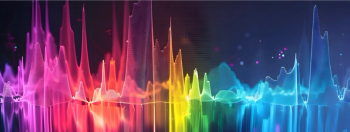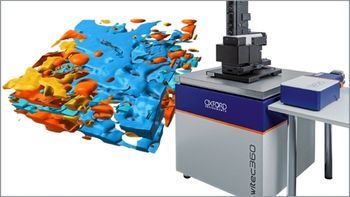
Optical Properties of Solid Samples
Webinar Date/Time: Wednesday, June 26th, 2024 at 8am PDT | 11am EDT | 4pm BST | 5pm CEST
This webinar will review detailed studies that demonstrate how to accurately estimate the effects of various physical processes, including thermal treatments, ionizing radiation exposure, optical exposure, and mechanical treatments, on both crystals and thin films. Additionally, the event will cover in-depth guidance on estimating the optical band gap of thin films using the Tauc and Kubelka-Munk methods.
Register Free:
Event Overview:
This webinar aims to comprehensively explore transmittance and reflectance measurements for both transparent and non-transparent crystal and thin film materials. Through detailed studies, it will be demonstrated how to accurately estimate the effects of various physical processes, including thermal treatments, ionizing radiation exposure, optical exposure, and mechanical treatments, on both crystals and thin films. Additionally, this webinar will provide in-depth guidance on estimating the optical band gap of thin films using the Tauc and Kubelka-Munk methods.
Key Learning Objectives:
- Transmittance and reflectance measurement methods
- Optical properties of solid materials
- Estimation of optical band gap by Tauc and Kubelka-Munk methods
Who Should Attend:
- Under/Post-Graduate Researchers/Students
- Laboratory Managers
- Scientist/Staff Scientists
- Lab Technician/Technologist
- Analysts
- Commercial or Academic organizations in the fields of optics, photonics, electro-optical, or semiconductors
Speaker:
José Fernando Diniz Chubaci MSc, PhD
Laboratory of Ionic Crystal, Thin Films and Dating (LACIFID)
Institute of Physics, University of São Paulo
José Fernando Diniz Chubac earned his MSc in 1987 and PhD in 1996 from the Institute of Physics of the University of São Paulo. He was also a research student at the Institute of Scientific and Industrial Research of Osaka University, where he began his work on surface characterization and thin film formation for mechanical, optical, and electronic applications. Currently, he is a lecturer at the Institute of Physics and Elected Member at Large of the International Solid State Dosimetry Organization (ISSDO). He has more than 80 publications in scientific journals and conference proceedings on the ionizing radiation effects in ionic crystals and minerals, as well as on the formation and characterization of thin films. He has joined around 50 international conferences and his publications have been cited more than 900 times in the scientific literature.
Register Free:
Newsletter
Get essential updates on the latest spectroscopy technologies, regulatory standards, and best practices—subscribe today to Spectroscopy.





